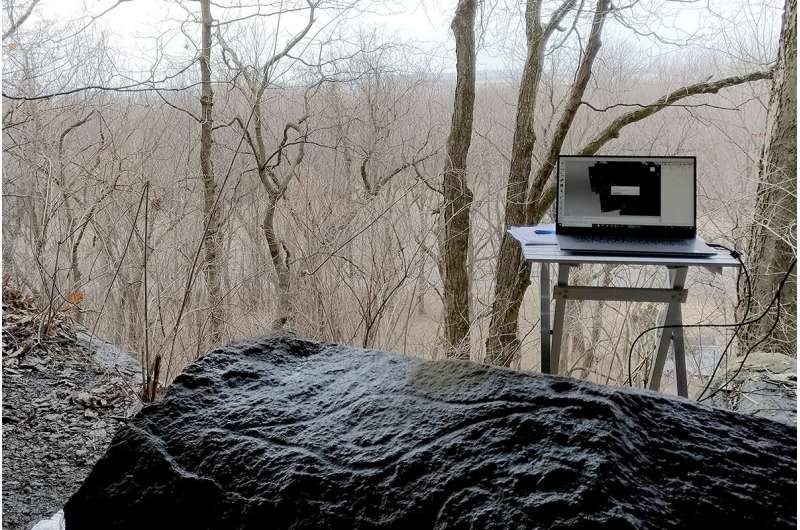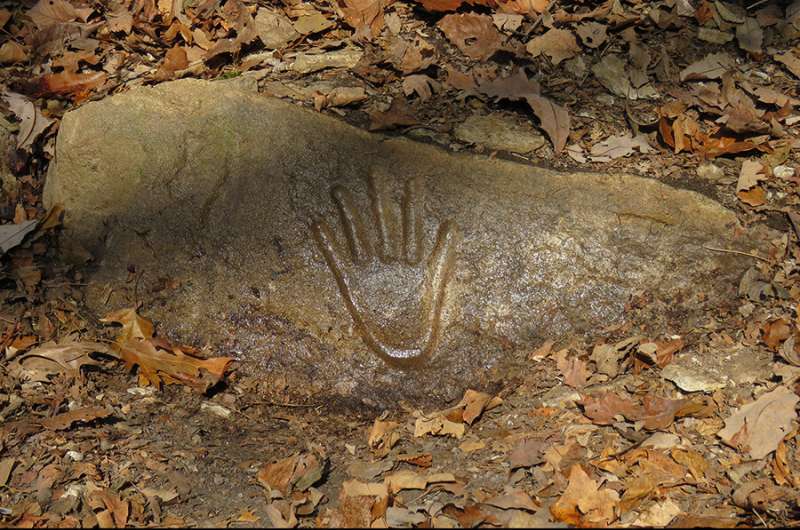A limestone boulder with petroglyphs carved into it sits inside a rock shelter with a view toward the Mississippi River floodplain, below. One of the carvings is of a superhuman eye with a cross-in-circle motif at its center. Credit: Alleen Betzenhauser
It isn't often that you get a sunny, 70-degree day in the beginning of February, especially less than a week after a record-setting cold snap plunged most of Illinois into subzero temperatures. We certainly aren't about to waste the fine weather, even if it means a day lugging heavy equipment up a steep ravine in the bluffs overlooking the Mississippi River.
A local landowner leads our team of archaeologists past a small waterfall up to the top of the bluff, where two rock shelters contain a number of ancient petroglyphs. These designs were pecked and ground into limestone boulders sometime between A.D. 1050-1400, during what archaeologists call the Mississippian Period. This era saw the founding of the American Indian city of Cahokia, some 30 miles north of here.
Luckily, our guide has tied a series of ropes between trees to help us haul our gear, and ourselves, up the steep, slick slope.
When we reach our destination, we take a moment to catch our breath. It's easy to appreciate why past people chose this spot for their petroglyphs: It has a commanding view of the great Mississippi River floodplain below. A limestone outcrop in one shelter is emblazoned with the imprint of a hand – a tangible, human link to the people who created these icons nearly a millennium ago. A limestone boulder in a nearby rock shelter bears glyphs of a superhuman eye, concentric circles and other, more enigmatic motifs.
The team used a portable 3-D scanner to recreate the details of a hand petroglyph from a site overlooking the Mississippi River in Monroe County, Illinois. Credit: Steve Boles (top) and John Lambert (bottom)
This site and others like it are at risk from erosion, urban development, and damage by looters. That's why we're here armed with a new tool: a portable, structured-light 3-D scanner.
With the scanner, we can capture extremely detailed geometric data and photography to create 3-D models of the site's dozen individual Mississippian Period petroglyphs. These will serve as a digital record of the site and make it more accessible both to scientists and to the public. We take some notes and measurements, hook the scanner up to a laptop computer and battery pack, and get to work.
This may be the only day this winter that is warm enough to operate the 3-D scanner outdoors, and it's a golden opportunity to thoroughly document the petroglyphs should this irreplaceable resource be lost forever.
Provided by University of Illinois at Urbana-Champaign

























